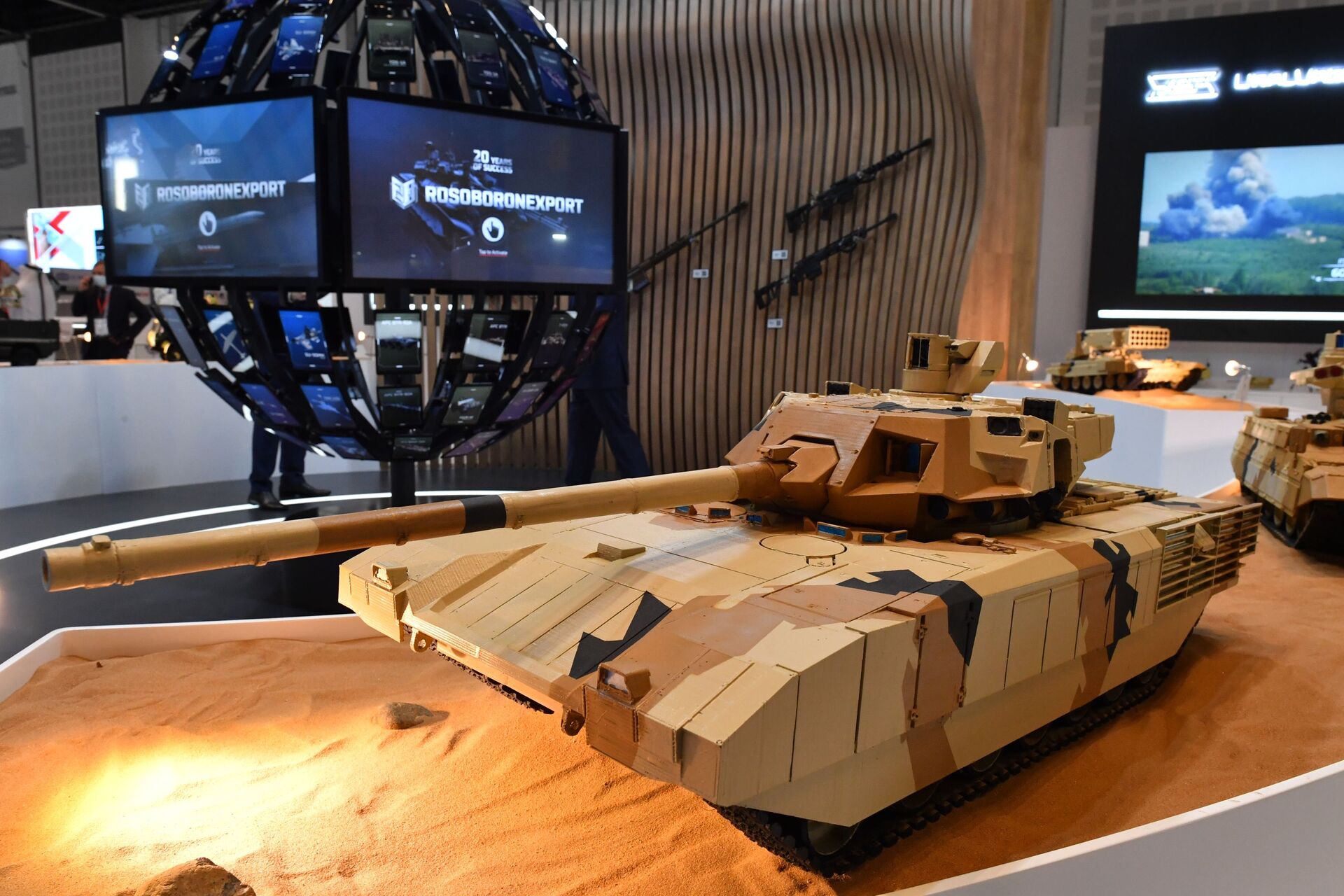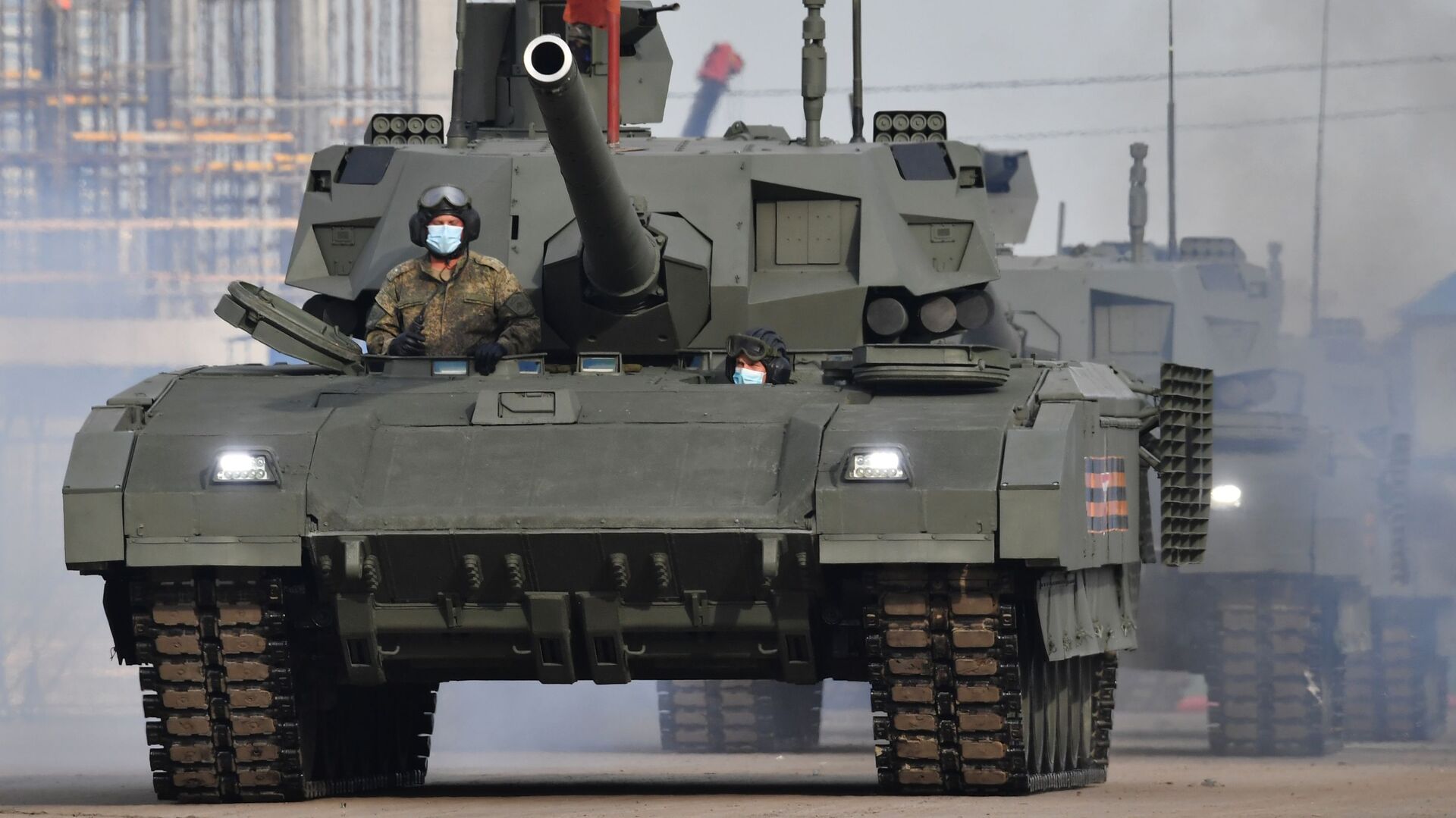For the first time in the history of tank manufacture, Russia's T-14 Armata tank can find and choose targets on the battlefield without the participation of the crew, a source in the military complex told Sputnik on Wednesday.
T-14 capabilities were successfully tested during the military training. It is noted that the decision on whether to hit the chosen target is still up to a human.
"The fire control system (FCS) of Armata has a digital catalog with signatures of typical targets of the battlefield, including tanks, APMs, helicopters, etc. Artificial intelligence elements allow the onboard computing facilities of the machine to independently search for targets [...] and recognize them, [...] to carry out priority selection and take for escort", the military source told Sputnik, outlining that there are no analogues in foreign military equipment to Armata's fire control system.
One military drill was conducted with the use of mathematical models and semi-natural target layouts, including photocontrast images and thermal imitators.
"Also, tests were carried out at the proving ground, where Russian armored vehicles acted as objects of search for the Armata. Based on the results of the drills, the effectiveness of the system is confirmed to comply with the declared combat characteristics", the military source said.
To search and capture targets, the T-14 uses a combined sight that works in both the visible and infrared ranges.

Touted as the world's only third-generation post-war tank with no equal, the Armata has a combat module that is completely remote-controlled, while the crew is securely accommodated in an armored capsule isolated from both the fuel section and munitions. This means that in the event of the tank getting hit, the crew is more likely to survive.
According to the director general of the Russian state arms exporter Rosoboronexport, Alexander Mikheev, six countries have expressed interest in purchasing the T-14 tank for their militaries.


